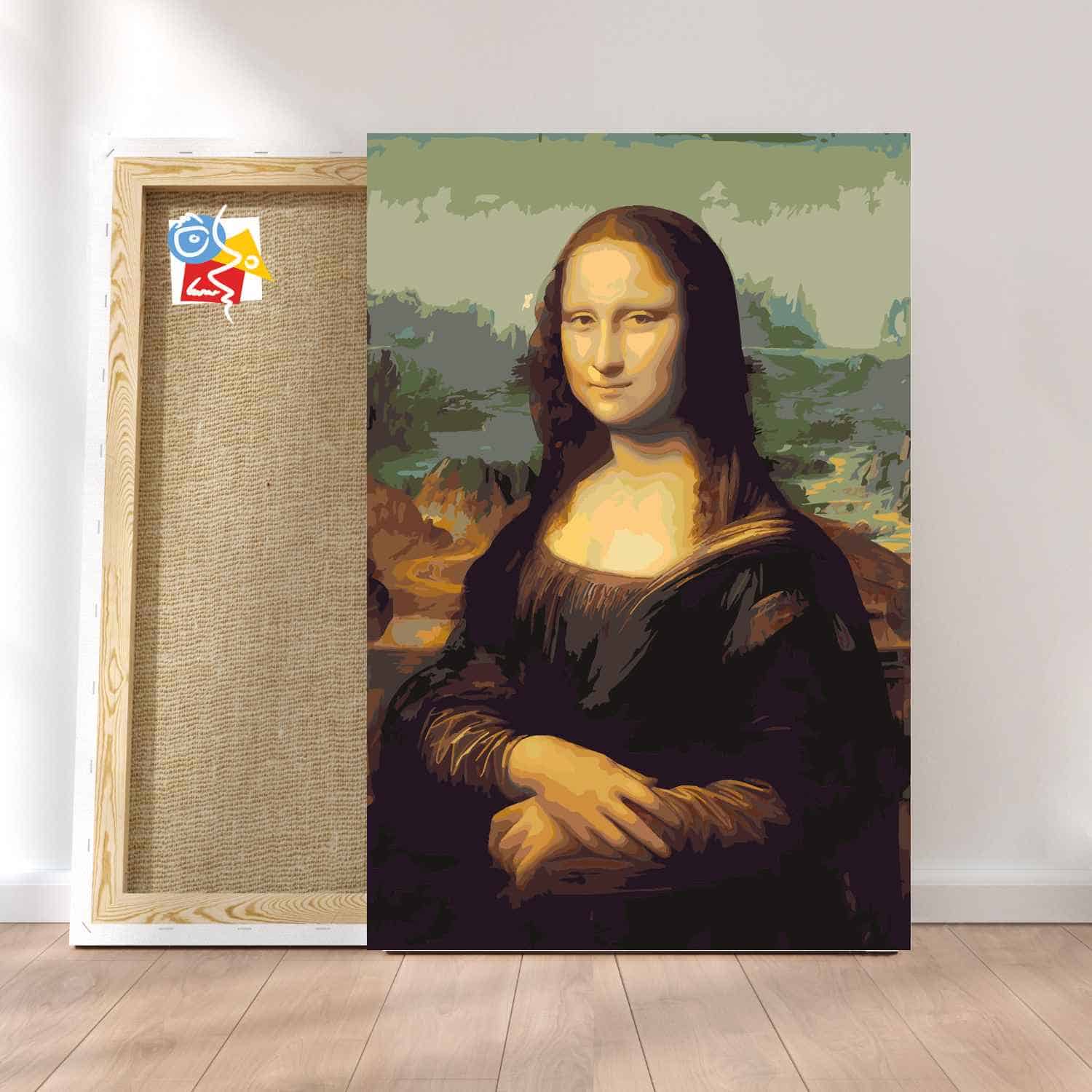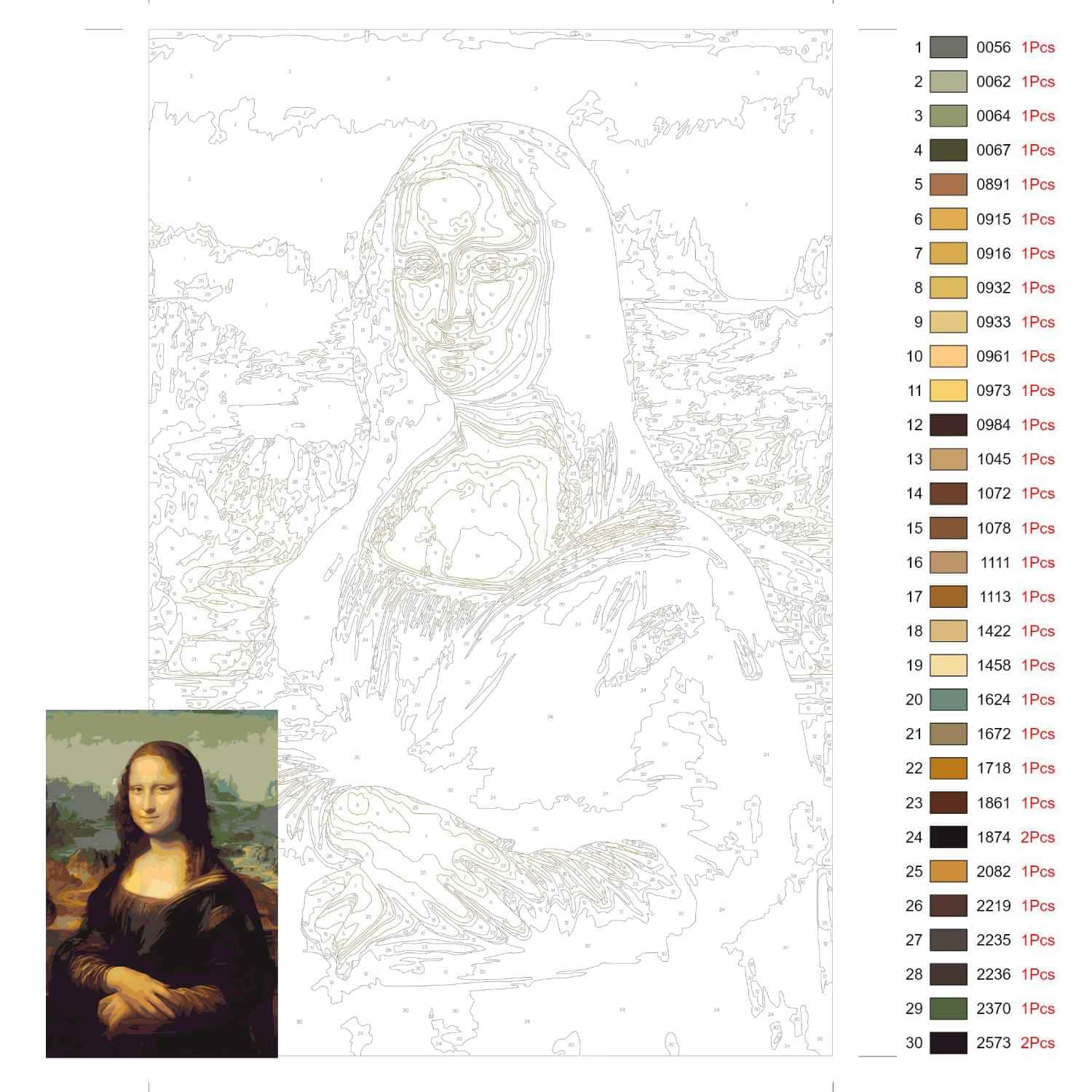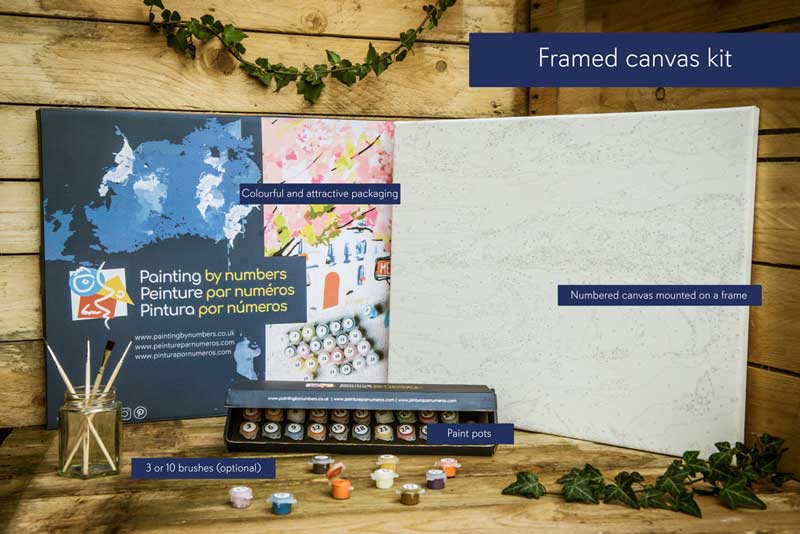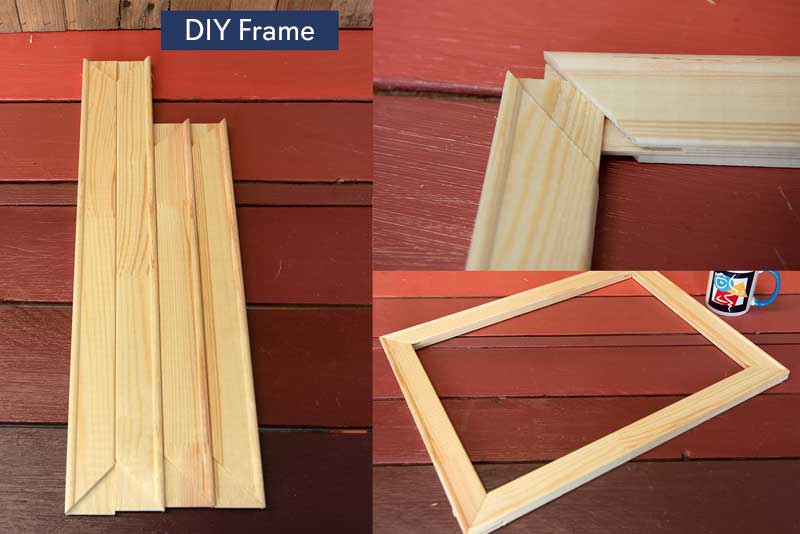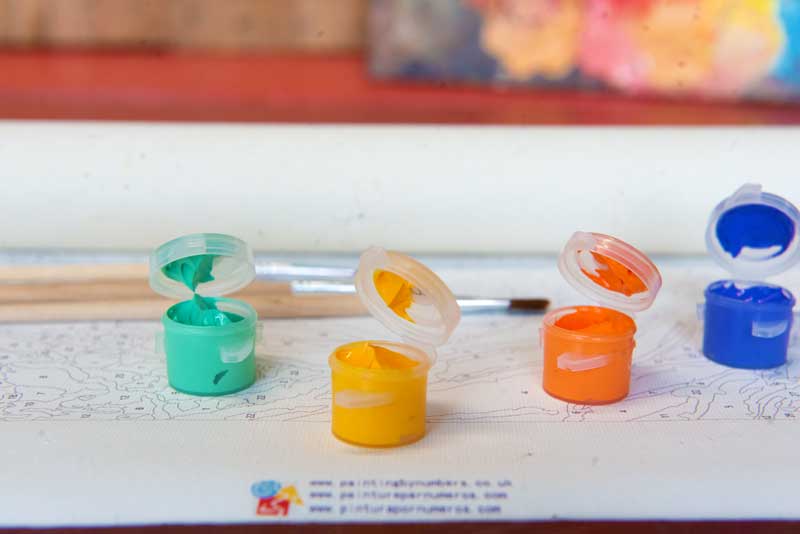Painting by Numbers - Leonardo Da Vinci
The illegitimate son of a notary and a young peasant woman, Leonardo da Vinci was raised by his father, who placed him in Verrocchio's workshop in 1470, where he learned drawing, painting, mathematics, perspective, sculpture and architecture.
He began his career as a freelance painter, commissioning portraits and religious paintings from the notables and monasteries of Florence. He became close to Ludovico Sforza who became his patron. It was during this period when he lived in Milan that he painted the Last Supper in the refectory of the Dominican convent of Santa Maria delle Grazie. The fall of Ludovico Sforza forced Da Vinci to leave Milan and he travelled between the cities of Milan, Florence and Rome for fifteen years.
Around 1490, Leonardo da Vinci created Vitruvian Man, inspired by the writings of the Roman architect, Vitruvius. This piece will remain as one of the most symbolic of the Renaissance, of humanism (man at the centre of everything) and of science.
He stayed in Florence where he produced works considered today as masterpieces such as The Battle of Anghiari and the Mona Lisa.
He was called back to Milan, then under French regency, by King Louis XIV to produce two Madonnas for him.
Once the commission was completed, he went to Rome with Pope Leon X and his brother Julian de Medici where he worked mainly on his scientific works.
When the French took the Duchy of Milan in 1515 under Francis I, Da Vinci left Rome and joined the king in Pavia. The new generation, embodied by Raphael and Michelangelo, threatened his status as an undisputed genius and the loss of his patron Julian de Medici, so he moved to France to the Hotel du Cloux, where he received a pension from the king. It was there that he died after several months of illness.
The works he produced during his lifetime place him among the great painters of his time to this day. The rare charm of his works lies in the subtle mixture of analysis and emotion, accuracy and fantasy, naturalness and spirituality, in the psychological realism of an artist who believes that the spirit is present everywhere and must appear everywhere: la Pittura è cosa mentale.

